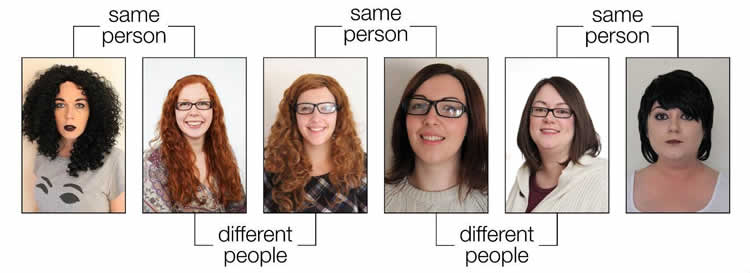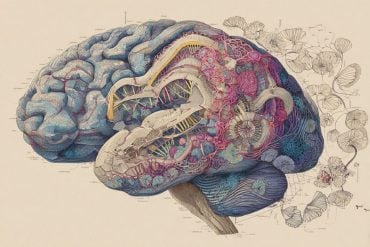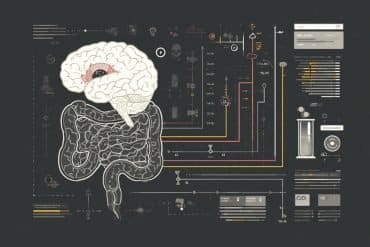Summary: Researchers report small, but deliberate changes in a person’s facial appearance are effective in identity deception.
Source: University of York.
Superficial but deliberate changes in someone’s facial appearance – such as a new hairstyle or complexion – are surprisingly effective in identity deception, new research suggests.
In the study, led by researchers at the universities of York and Huddersfield, participants were often fooled by disguises when asked to judge whether two photographs showed the same or different people.
Disguises reduced the ability of participants to match faces by around 30%, even when they were warned that some of the people had changed the way they look.
Participants were only able to see through disguises reliably when they knew the people in the images.
Co-author of the study, Dr Rob Jenkins from the Department of Psychology at the University of York, said: “We shouldn’t be complacent about deliberate disguise in criminal and security settings. When someone puts their mind to concealing their identity, it can be very effective.
“Familiarity with the people who are disguising themselves improves accuracy. When you are unfamiliar with a face you are easily fooled by superficial changes in hairstyle or colouration.
“However, when you ‘know’ a face you tend to rely more on internal facial features – the eyes, nose and mouth – which are much harder to alter.”
The models recruited for the study were given plenty of time and resources with which to change their appearance. Many used make-up, changed their hair colour and style, and some grew or got rid of facial hair.
To ensure maximum effort, a financial incentive was introduced with a prize for the model whose disguise fooled the most participants.
Props like hats or dark glasses were not allowed as they are prohibited in real-life security settings.
The researchers also compared the effectiveness of two different methods of disguise.
Impersonation disguise – or trying to look like someone else – is sometimes used by people attempting to travel using a stolen passport or in cases of identity theft. Evasion disguise – trying not to look like yourself – might be used in witness protection programmes or by undercover police, as well as by criminal suspects on the run from the law.

The study found that evasion disguise is much more effective than impersonation disguise.
Dr Eilidh Noyes, from the University of Hudderfield, added: “With evasion disguise, you can change your appearance in any way you like. With impersonation, you can only change your appearance in ways that resemble your target, so your options are much more constrained.
“Deliberate disguise poses a real challenge to human face recognition. The next step is to test automatic face recognition on the same tasks.”
Source: University of York
Publisher: Organized by NeuroscienceNews.com.
Image Source: NeuroscienceNews.com image is credited to Rob Jenkins, University of York.
Original Research: Abstract for “Deliberate disguise in face identification” by Noyes, Eilidh. and Jenkins, Rob in Journal of Experimental Psychology: Applied . Published February 7 2019.
doi:10.1037/xap0000213
[cbtabs][cbtab title=”MLA”]University of York”Catch Me If You Can: Disguises are Surprisingly Effective.” NeuroscienceNews. NeuroscienceNews, 18 February 2019.
<https://neurosciencenews.com/effective-disguises-10768/>.[/cbtab][cbtab title=”APA”]University of York(2019, February 18). Catch Me If You Can: Disguises are Surprisingly Effective. NeuroscienceNews. Retrieved February 18, 2019 from https://neurosciencenews.com/effective-disguises-10768/[/cbtab][cbtab title=”Chicago”]University of York”Catch Me If You Can: Disguises are Surprisingly Effective.” https://neurosciencenews.com/effective-disguises-10768/ (accessed February 18, 2019).[/cbtab][/cbtabs]
Abstract
Deliberate disguise in face identification
Facial image comparison is difficult for unfamiliar faces and easy for familiar faces. Those conclusions are robust, but they arise from situations in which the people being identified cooperate with the effort to identify them. In forensic and security settings, people are often motivated to subvert identification by manipulating their appearance, yet little is known about deliberate disguise and its effectiveness. We distinguish two forms of disguise—Evasion (trying not to look like oneself) and Impersonation (trying to look like another person). We present a new set of disguised face images (the FAÇADE image set), in which models altered their appearance to induce specific identification errors. In Experiment 1, unfamiliar observers were less accurate matching disguise items, especially evasion items, than matching undisguised items. A similar pattern held in Experiment 2, in which participants were informed about the disguise manipulations. In Experiment 3, familiar observers saw through impersonation disguise, but accuracy was lower for evasion disguise. Quantifying the performance cost of disguise reveals distinct performance profiles for impersonation and evasion. Evasion disguise was especially effective and reduced identification performance for familiar observers as well as for unfamiliar observers. We subsume these findings under a statistical framework of face learning.







